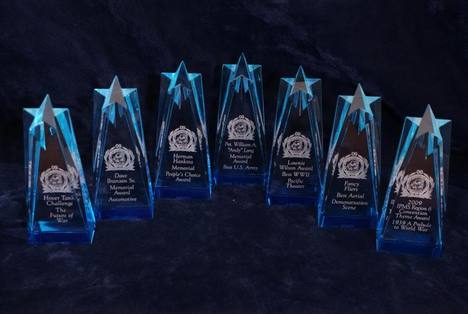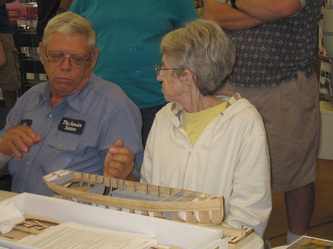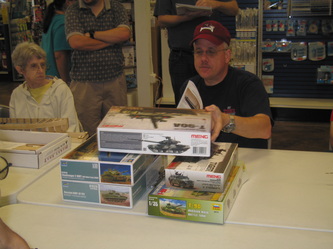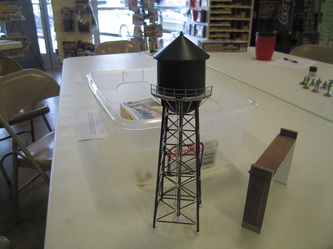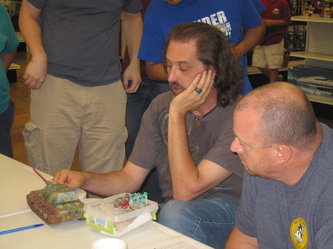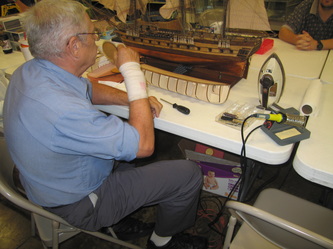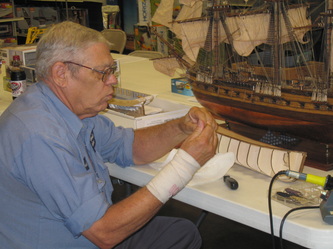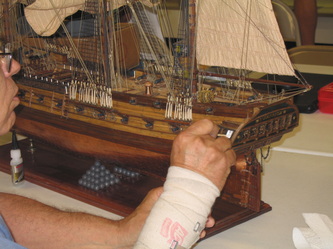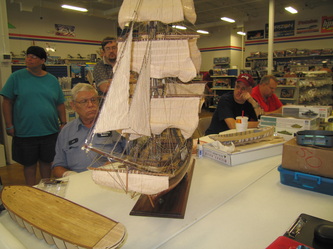Do you know what your model is going to look like before you start the build? Many of the models I have built I knew what they were going to look like because I was either copying what someone else had built or the box art on the kit package. Copying is not what I am talking about. What I am talking about is having at least a vague idea in your mind what your finished model is going to look like. It is taking the next step from copying to creating a specific look to what you are making. Visualization of a model before it is built is an act of the imagination. It requires actually seeing, in your mind’s eye the model completed in all of its varying colors and textures.
Some of the models I have built emerged as I built them. I may have some vague color schemes in mind but once I start applying the paint the final model emerges. I have spoken to a number of figure modelers about this process. The master level painters often have a very specific idea of what they are trying to approximate before they start. Other master painters just start painting and the work unfolds as they paint. They just keep adding layers of paint until a look emerges that resonates with them and the model. Maybe different genres of models use different processes. Master level armor modelers have a photograph that starts as their base conception of the work and they then go from that point and visualize what the end project is going to look like. Aircraft modelers often follow a similar process where they start with the base look of the aircraft and then start a weathering process that adds age and life to the plane. I have heard car modelers discuss their desire to make their car look like a “brute” of power. For me, it often has to do with the textures of clothing or the color and tones of the skin.
There have been several models I have built where as soon as I saw the model I knew what it was going to look like. The model inspired in me a vision of what I was supposed to do with it even before I had purchased the model. The model below was one such model. The main character is sitting behind a wall and her uniform is worn and ripped in places after a long day of combat. Her head is slightly drooped and resting on her hand. She is weary and alert at the same time. A simple back-story went through my mind. After a day of fighting was completed, the character is weary but uncertain if she is safe. The wall acts as a cover to guard her in her repose. I imagined this scene taking place at sunset and the warm rays of the setting sun illuminated one side of her while her body and the wall cast a shadow from the rays of the sun. The warm light is nourishing for her and is supportive of her rest. It is also symbolic of the end of her conflict. The colors of the wall behind her are a calming green with shades of red peeking through which emphasizes the current calm of the setting punctuated by the struggles of the day. I had hoped that this back-story would not necessarily be known to the viewer but would be felt by the viewer. They would experience the calm she was experiencing as well as the tension that was an aftermath of the day.
Visualization is more than knowing the back story. It is actually seeing the results of the back story in your imagination. Visualization often starts with research and studying photographs or artwork. I try different ideas out in my mind before I settle on the final look. As I continue to grow in my modeling skills I need to push for the vision, at least a general vision, before I start a piece. I need to learn how to better let the vision guide my paint selection and the strokes of my brush. Sometimes the model guides during the painting process. As I apply the shadows and highlights the image of what the model needs to look like becomes more clear and the model guides me through the process. This idea seems more suited to figure models maybe than other genres of models. Yet, there is a general composition of color and texture that develops during the finishing of an armor piece that is very similar to figure. I imagine, for example, if I were completing a PBY Catalina I would, at some point, start seeing the Catalina at different ages of its service and the effects of the South Pacific sun or wear and tear from regular maintenance. This would be a similar process to what I am describing.
Visualization requires experience and practice. There is a basic understanding of not only what things look like but how combining different colors of paint can influence the shading on the model. It requires an understanding of the multiple colors and textures of weathering processes and how to reproduce them in a smaller scale. One of our club members shared with me an experience where they put a nail in a glass of water and then photographed it each day to gain a better understanding of the progression of rust and have a photographic record of that progression.
I am afraid that I am still prone to copying more than visualizing a finished piece. During the building process I often visualize portions of the model before I start but not the complete model. One of the reasons it takes me so long to complete a model is the time it takes to figure out the process necessary to obtain the finished look. This is the same if I am copying or visualizing the piece. I am working on a piece presently in which the figure is wearing a chintz dress uniform tunic. How does chintz look compared to cotton and how does it look different than a shiny piece of latex or plastic? How would I reproduce that look and what variations in shading are necessary to demonstrate the sheen and volumes of the garment? These are the questions I ask myself before I lay down the paint. I would like to “know” better what it is going to look like before I start instead of just guessing. Visualization and being able to reproduce the visualized end result are skills that often mark the difference between the Master modeler and the intermediate modeler. Knowing what the model is going to look like before you start is a step in the development of modeling skills.





